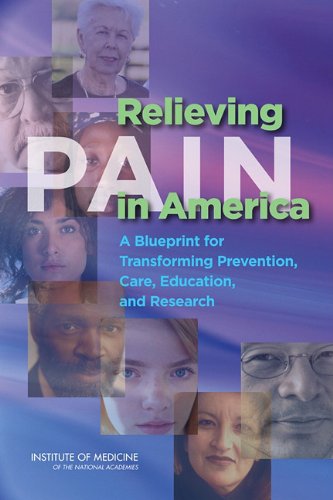Chronic pain affects at least 116 million American adults–more than the total affected by heart disease, cancer, and diabetes combined. It costs the nation up to $635 billion each year in medical treatment and lost productivity. Pain is a uniquely individual and subjective experience that depends on a variety of biological, psychological, and social factors, and different population groups experience pain differently. Because pain varies from person to person, health care providers should tailor pain care to each person’s experience, and self-management of pain should be promoted. A cultural transformation in the way clinicians and the public view pain and its treatment is necessary to better prevent, assess, treat, and understand pain of all types. Relieving Pain in America assesses the state of the science regarding pain research, care, and education and offers a blueprint for developing a population-level strategy to increase awareness about pain and its treatments. The report asserts that the National Center for Health Statistics, the Agency for Healthcare Research and Quality, other government agencies, and private organizations should accelerate the collection of data on pain incidence, prevalence, and treatments. In addition, training programs for dentists, nurses, physicians, psychologists, and other health professionals should include pain education in their curricula and promote interdisciplinary learning. Successful treatment, management, and prevention of pain require an integrated approach that responds to all the factors that influence pain. Government agencies, health care providers, health care professional associations, educators, patient advocacy groups, and public and private funders of health care must collaborate to address the issue of pain in America.
Medicine
{PDF} Relieving Pain in America: A Blueprint for Transforming Prevention, Care, Education, and Research Care, and Education Committee on Advancing Pain Research, Institute of Medicine
$9.99






Reviews
There are no reviews yet.